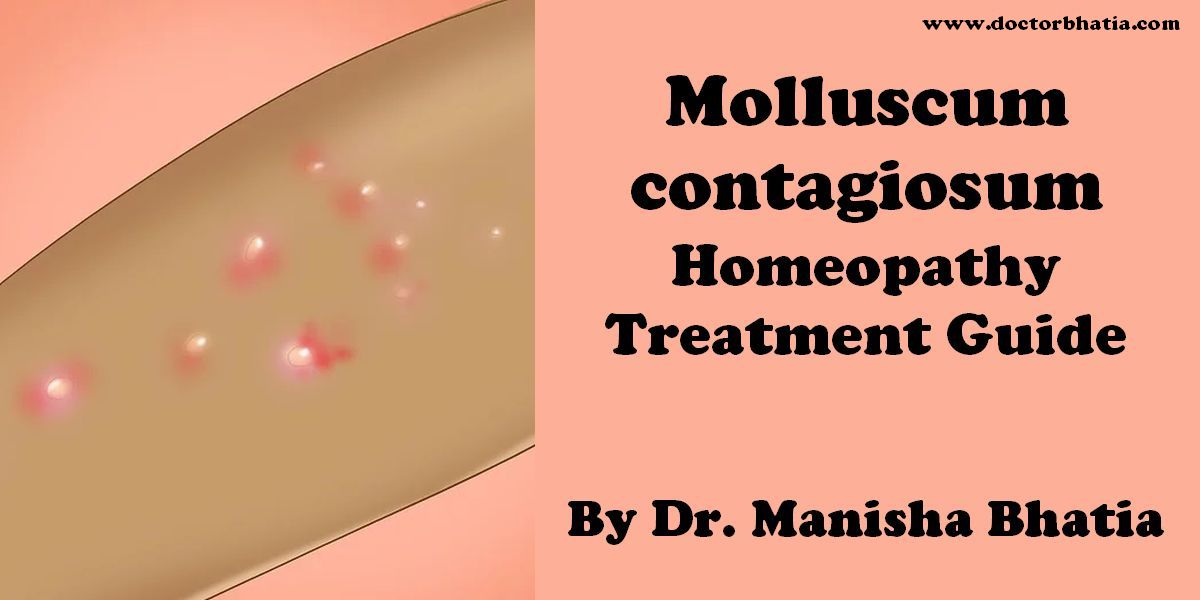Molluscum contagiosum is a viral skin infection that causes raised, pearly-white papules or nodules on the skin which is umblicated, dome-shaped & having central depression.
Molluscum contagiosum (MC) is a viral infection of the skin or occasionally of the mucous membranes. MC has no animal reservoir, infecting only humans, as did smallpox. The infecting human MC virus is a DNA poxvirus called the molluscum contagiosum virus (MCV). There are four types of MCV, MCV-1 to -4; MCV-1 is the most prevalent and MCV-2 is seen usually in adults and often sexually transmitted. About one in six young people are infected at some time with MC. The infection is most common in children aged one to ten years old. MC can affect any area of the skin but is most common on the body, arms, and legs. It is spread through direct contact or shared items such as clothing or towels.
The virus commonly spreads through skin-to-skin contact. This includes sexual contact or touching or scratching the bumps and then touching the skin. Handling objects that have the virus on them, such as a towel, can also result in infection. The virus can spread from one part of the body to another or to other people.
The time from infection to the appearance of lesions ranges from 2 week to 6 months, with an average incubation period of 6 weeks. Diagnosis is made on the clinical appearance; the virus cannot routinely be cultured, this can be done by popping with a needle but it must be done regularly to prevent multiplying.
ETIOLOGY
CAUSES
• Molluscum contagiosum is caused by a virus that is a member of the poxvirus family. You can get the infection in a number of different ways.
• This is a common infection in children and occurs when a child comes into direct contact with a lesion. It is frequently seen on the face, neck, armpit, arms, and hands but may occur anywhere on the body except the palms and soles.
• The virus can spread through contact with contaminated objects, such as towels, clothing, or toys.
• The virus also spreads by sexual contact. Early lesions on the genitalia may be mistaken for herpes or warts but, unlike herpes, these lesions are painless.
• Persons with a weakened immune system (due to conditions such as AIDS) may have a rapidly worse case of molluscum contagiosum.
CLINICAL FEATURES
• Onset- insidious.
• Location- trunk, arms, neck, face, thighs.
LESION
• Pearly-white, smooth, umblicated, dome-shaped.
• Multiple, discrete.
• Size- 2-5 mm.
• Hard in consistency.
• When squeezed, cheesy material is discharged.
COURSE
• Self limiting lesions usually clear spontaneously in about a years time without any sequelae, though some lesions may resolve with scarring.
• Large solitary lesions may not resolve spontaneously.
• Persistent, extensive & difficlt to treat lesions in immunocompromised individuals & in patients with atopic dermatitis.
COMPLICATION
• Superimposed secondary infection.
DAIGNOSIS
• Clinicaly.
Differential diagnosis
• Verruca vulgaris.
• Cryptococcosis.
HOMOEOPATHIC TREATMENT for Molluscum contagiosum
Reperterisation
Boericke- skin- molluscum.
Homeopathic Remedies for Molluscum
• Bromium.
• Bryonia.
• Calc ars.
• Causticum.
• Kali iod.
• Lycopodium.
• Natrum mur.
• Silicea.
• Sulphur.


